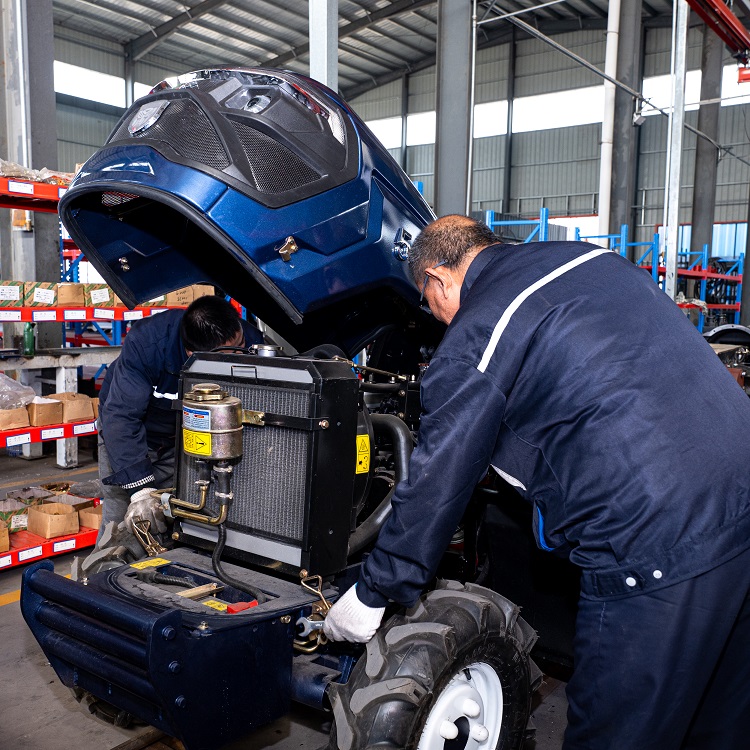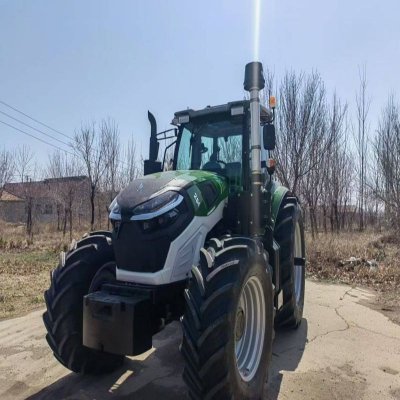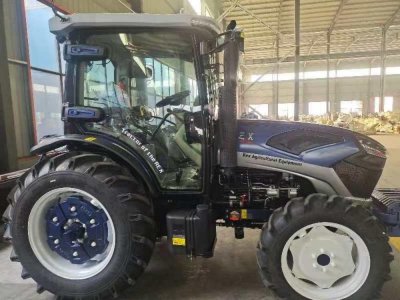What are the main inspections on tractors during preparation for farming?
"Good opportunities" means that agricultural machinery used in agricultural production must always be in good working condition, which is a critical link to ensure the quality of operations and increase crop yields. To this end, during the preparations for spring ploughing in 2025, farmers must make arrangements and overhaul tractors and other agricultural machinery to ensure that these machines are in good working condition in advance and can be put into spring operations reliably, efficiently and safely.

Tractors are power machines that pull supporting equipment. They have long operating time, fast working speed, and relatively many parts to be inspected. Before spring plowing, they must be carefully inspected and maintained.
First, the tractor must be thoroughly cleaned and inspected. For a locomotive that has been out of use for a winter, the first inspection is to thoroughly clean the dirt, dust and oil stains on the surface and parts of the tractor. Check whether the main connection parts are stable and whether the parts are loose, especially the walking parts and the parts that are easy to loose should be re-reinforced. Check whether the tires are inflated and the oil level of the engine oil pan. If it is insufficient, add enough. After the engine is started, let the machine run at idle speed for 3-5 minutes to allow the lubricating oil to fully enter the working parts. At the same time, check whether the instruments, lights, and horns are normal.
Second, check and maintain the lubrication system. Replace the three cores (air filter, diesel filter, oil filter) in time, clean each hydraulic oil filter, and replace the lubricating oil and fuel according to weather conditions before working in the field.
Third, check the cooling system. Pay attention to check whether the engine is frostbitten, whether the drain switch, radiator and other parts are frozen and cracked, and if they are frozen, they should be replaced and repaired immediately. Add antifreeze in time, and be careful not to add well water and tap water that are easy to produce scale.
Fourth, check the circuit system and lubricating oil. Make sure that the circuits of the start, lighting, and instrument are normal, and the insulation parts of all electrical accessories have no leakage, short circuit, etc. The engine cold start device should be able to work normally. Check the lubricating oil of the gearbox, front axle, and terminal transmission one by one; check whether the hydraulic oil in the steering gear is sufficient; check whether the hydraulic oil in the hydraulic system is sufficient.
Fifth, check the steering system and brakes. Pay attention to the gap between the left and right directions, observe the gap between the tie rod ball head transmission and the cylinder (hydraulic cylinder direction) pin shaft. If the gap is too large, replace the tie rod ball head and cylinder pin shaft. Check the clutch. Check the gap between the clutch pedal and the release bearing and the release lever to ensure that the separation is complete, flexible, and without sticking. Check the brake fluid level and pedal travel. The brake pedal can be pressed down once for the first time, and cannot be pressed for the second time. The return position is normal and there is no stagnation. The height of the left and right brake pedals should be synchronized.
Tractor maintenance covers many aspects, from the engine to the electrical system, and then to the chassis system. Every link cannot be ignored. Only by doing a good job of comprehensive maintenance can we ensure the normal operation of the tractor in the harsh winter environment and provide strong guarantee for agricultural production.
Author: Li Shechao
Source: Agricultural Machinery News Network



